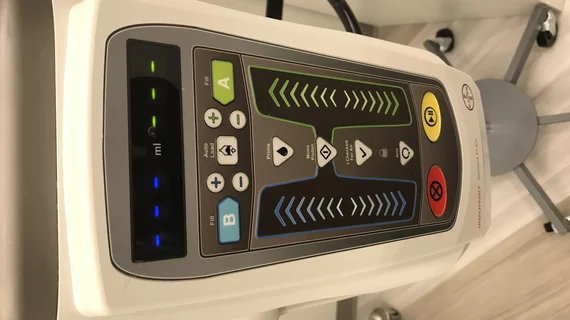A study in China looked to assess the safety of non-ionic iodinated contrast media (NICM) used in CT imaging scans by analyzing the rate of adverse drug reactions in a large retrospective analysis involving 473,482 patients. In general, NICM was found to be safe, with a low rate of adverse events—although there are certain risk factors for providers to consider. The findings are published in European Radiology. [1]
The patient cohort is a population from three institutions in China, and all 473,482 underwent intravenous NICM between 2017 and 2021 as part of an outpatient CT scan. Researchers looked at the general rate of adverse events—typically meaning an allergic reaction—and then adjusted their findings for various potential risk factors, including patient sex, NICM type and time of year.
The mean age of the patients was 55 years old, and roughly 54% were male. The overall rate of adverse drug effects was 0.110%, 0.0004% of which were serious. The study authors, led by Wen Zeng, PhD, of West China Hospital, Sichuan University, wrote this denotes a minimal risk, but they add that there are some complicated caveats.
First, the drug Iopromide was associated with the highest number of acute adverse events, most of which appeared relatively quickly after the NICM was administered. For late reactions that tend to be more serious, the culprit was typically iodixanol 320. The rate of adverse events was nearly identical across the sexes.
Interestingly, the seasons affected the likelihood of a patient having a negative reaction to contrast drugs, with both summer and autumn elevating the risk. Pre-existing conditions and any illness the patient suffered from showed no correlation with any change in the likelihood of an adverse drug reaction. Additionally, the area of the body being scanned by the CT had no impact on the level of risk.
Overall, the use of NICM for CT scans proved well-tolerated and safe, with a low risk of serious events. However, the study authors are not clear on whether these statistics hold true for inpatient CT exams involving contrast, suggesting the need for further research.
“In comparison to inpatients, outpatients may be exposed to higher risk due to a lack of extensive risk screening, less nursing care and higher throughput pressure. Safety data about NICM from a large population may complement guidelines and avoid ambiguity,” they wrote.
Notably, the patient population for this study was predominantly Chinese, and further research is necessary to see how adverse reactions change based on race and ethnicity.
The full study is available at the link below.

